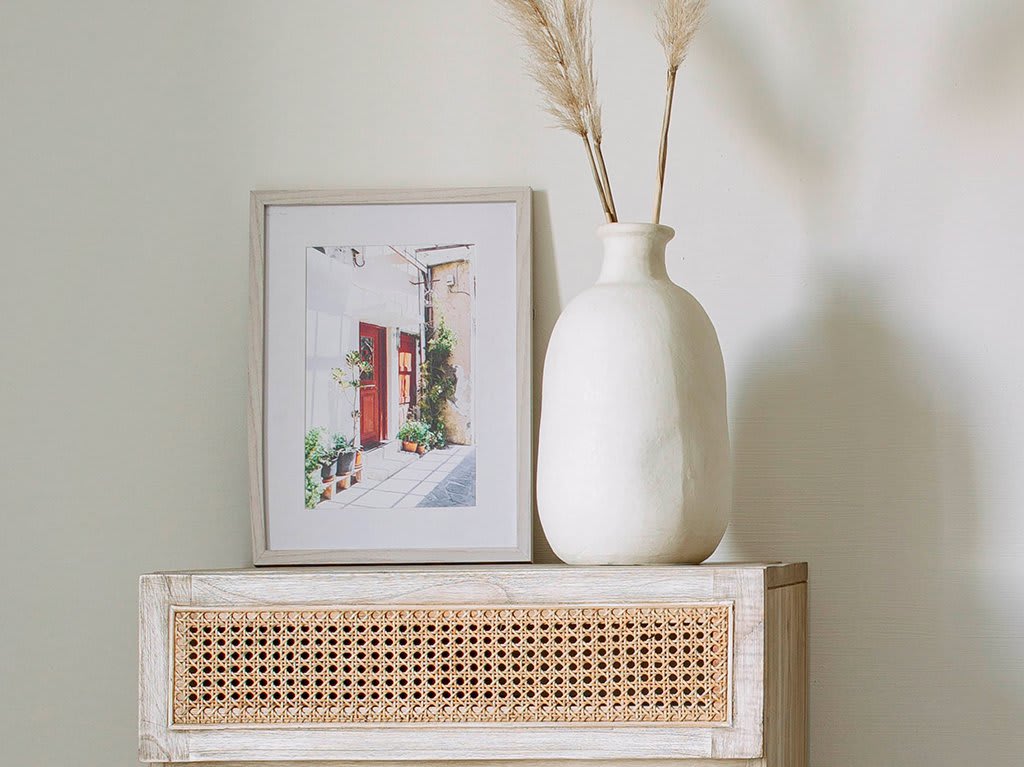
Why is Japandi design on every stylist’s mind?
According to Zen monks, this philosophy comprises seven practices:
- Shibumi – finding beauty in unpretentiousness
- Yugen – appreciating the finer details
- Datsuzoku - freedom
- Kanso – living simply
- Shizen – acting naturally, without pretence
- Fukinsei – appreciating asymmetry and imperfection
- Seijaku – Incorporating calmness into your way of life

This way of living initially appears to embrace minimalism but this is only to the extent that it centres on all that is truly essential, gently reminding us that more does not equal better. Ultimately, it means knowing how to differentiate between what you want and what you actually need.
It’s the opposite of consumerism that favours impulse buying over long-lasting quality. When it comes to wabi-sabi, this could translate into appreciating the simple charm of a broken old plate, and choosing to keep it, for example.
It’s about finding beauty in less-than-perfect objects based on their history and sentimental value. It means embracing the authenticity that resides in simplicity and imperfection. Nothing is forever, so old objects should be considered assets rather than rejects.

Because it’s a sustainable way of life that finds value in organic materials, furniture and decoration passed down from generation to generation, and celebrates the beauty of practical items that are made to last a life-time.
This would include artisanal crafts and traditional techniques, solid woods and natural fibres, all of which bring us unique items with a value that greatly exceeds that of the object itself.
Wabi-sabi means being down-to-earth, focusing on who we really are rather than what society expects us to be. Take a moment to breathe, think about the truly important things in life, and embrace imperfections, including your own.
Looking for more inspiration? Keep reading our blog for more tips and ideas.
When you purchase a new furniture item, mattress, kitchen, rug or curtain, you pay an eco-participation, which is used to fund the recycling of your old items.
What is eco-participation?
Eco-participation is an additional fee added to the price of new bedding and furniture, paid by the consumer and transferred to Ecomaison.
Why?
It is used to fund the sorting, recycling, and repurposing of old mattresses and furniture.
How does it work?
Ecomaison implements collection and recycling solutions in partnership with local authorities, social economy organizations (such as the Network of Recycling Centers and Emmaus), and furniture professionals.
Since 2013, through this initiative, Ecomaison has already handled over 10 million tons of used furniture and bedding, preventing the landfill of waste equivalent to 1,000 Eiffel Towers. Previously, 55% of discarded furniture ended up in landfills. Ten years later, it's less than 3%. With 800,000 tons per year, Ecomaison is now the leading supplier of recycled wood in France.
Who is Ecomaison?
Ecomaison is a state-approved eco-organization that manages the sorting, collection, reuse, and recycling of household items and materials, from the foundations to the finishing touches. Its mission is to collect and repurpose household items and materials, giving them a second life by donating, repairing, recycling, or using them as an energy source.
Find a collection point on the website ecomaison.com.
Some products are not longer available
If you want to continue please update your basket